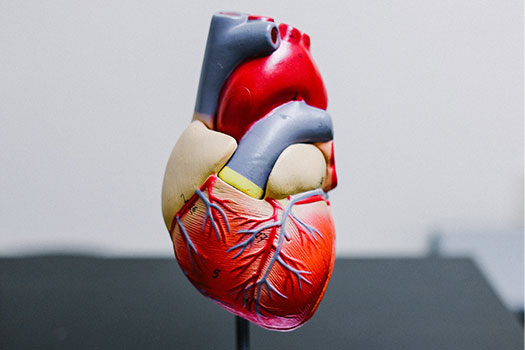Largest ever genetic study of QRS-T angles may improve risk prediction for cardiovascular disease
A team of international researchers have performed the largest genetic analyses to date of electrocardiogram (ECG) measures associated with cardiovascular disease.
The study, published today in Nature Communications, was led by researchers at Queen Mary University of London. The findings uncover the biological and genetic mechanisms of spatial and frontal QRS-T angles, increasing the potential for improved risk prediction of cardiovascular disease.
The spatial (3-dimensional) and frontal (2-dimensional) QRS-T angles, are measures calculated from the electrocardiogram (ECG) that are associated with arrhythmogenesis and mortality. Until now, the underlying biology reflected by these markers was unknown.
The researchers performed the largest genetic analyses to date (>118,000 individuals) and discovered 60 new loci for the spatial QRS-T angle, including ancestry-specific findings. Seven of these loci have not been previously reported in genetic studies for other ECG traits. Several of the candidate genes that were identified have established roles in the development of inherited cardiomyopathies and regulation of central arterial development. There are also shared genetic influences with other ECG measures, predominantly PR interval and QRS duration, this was not known and now furthers our understanding of the relationships with these classical ECG markers. Spatial QRS-T angle variants are associated with atrial fibrillation and embolism, while a genetic risk score constructed using all lead variants is associated with cardiac conduction disease. These findings indicate potential translational opportunities for cardiovascular disease risk stratification.
Despite many candidate genes at loci with known relationships with cardiomyopathies being discovered, the researchers did not identify a causal relationship with hypertrophic and dilated cardiomyopathy using Mendelian Randomisation. This is very interesting and suggests the spatial QRS-T angle reflect functional information rather than mechanisms underlying the development of a structural phenotype.
Cardiovascular disease is a significant global health and economic burden. With the findings from this work, improving our understanding of the biology and genetic contribution to established risk markers, we can create opportunities for the development of new clinical risk scores and therapeutic drug targets.
The spatial and frontal QRS-T angles are emerging markers of clinical importance for predicting cardiovascular disease risk. By advancing our knowledge of the underlying biology, observations from previous clinical studies can now be better understood and future research guided to maximise the potential for these markers to be effectively introduced into routine clinical practice.
Dr William J Young, Clinical Lecturer in Cardiology at Queen Mary University of London said: “To date, this is the largest study of the genetics of the QRS-T angle and was achieved through international collaboration, including studies part of the CHARGE consortium. Our findings have potential to improve risk prediction for cardiovascular disease.”
Dr Larisa Tereshchenko from Cleveland Clinic said: “This study uncovered novel biological pathways behind spatial QRS-T angle, helping us to understand underlying mechanisms of cardiovascular diseases. Our findings will facilitate the future development of novel treatments and preventive interventions for cardiovascular diseases.”
Professor Patricia B Munroe, Professor of Molecular Medicine and Centre Lead for Clinical Pharmacology and Precision Medicine at Queen Mary University of London said: “Our genetic study of spatial QRS-T angle provides insights into its biology and importantly new genetic risk scores for incorporation into existing models for prediction of cardiovascular diseases”.
Further information
- Research paper: Young, W.J., Haessler, J., Benjamins, JW. et al. Genetic architecture of spatial electrical biomarkers for cardiac arrhythmia and relationship with cardiovascular disease. Nat Commun 14, 1411 (2023). https://doi.org/10.1038/s41467-023-36997-w
